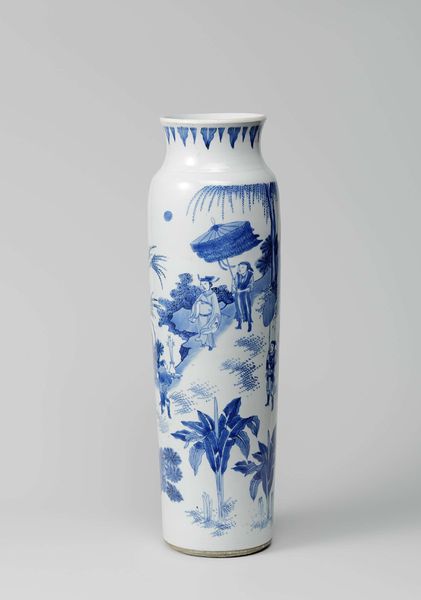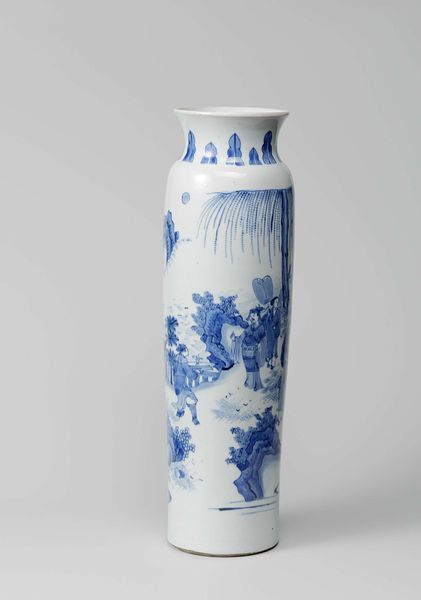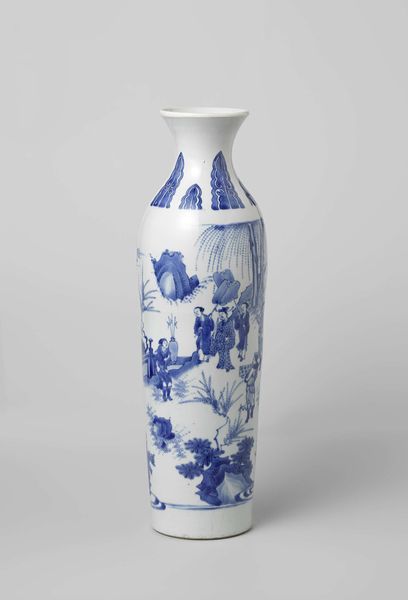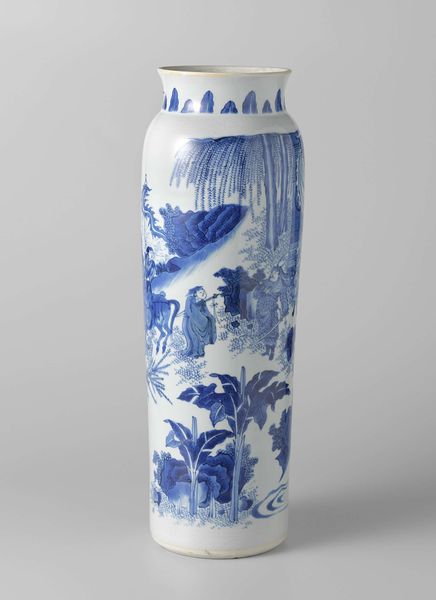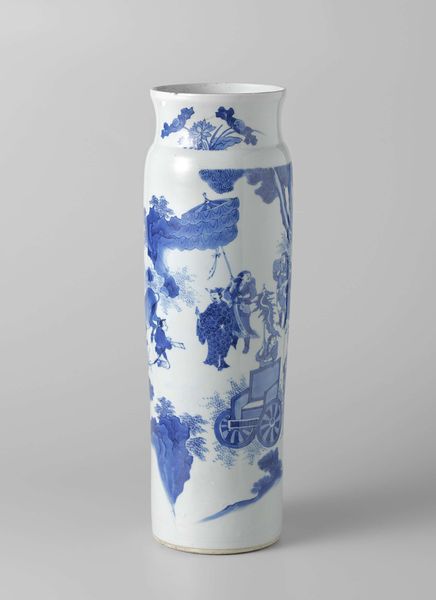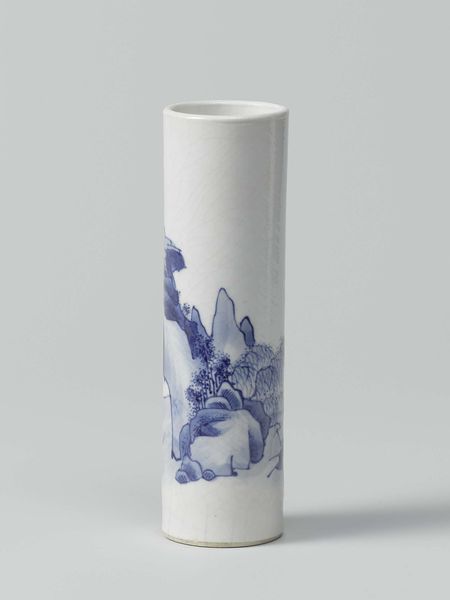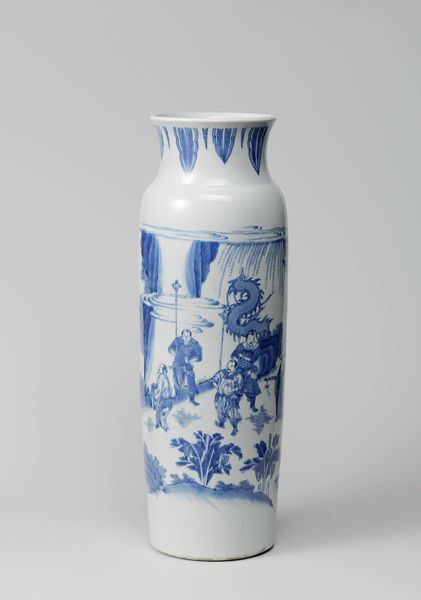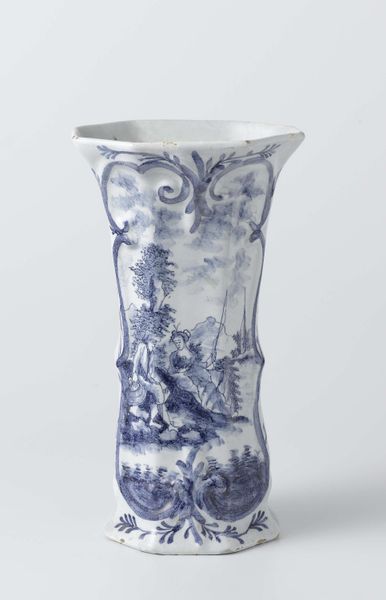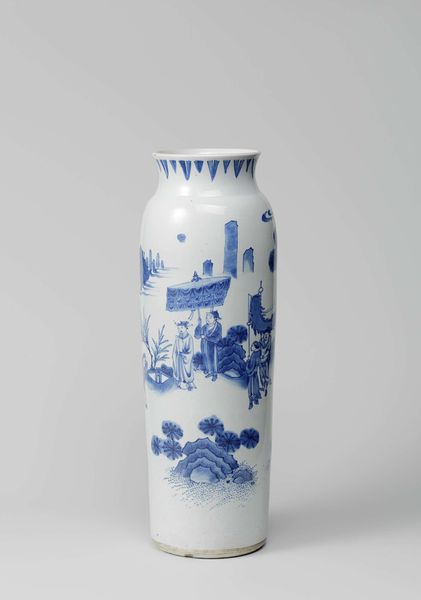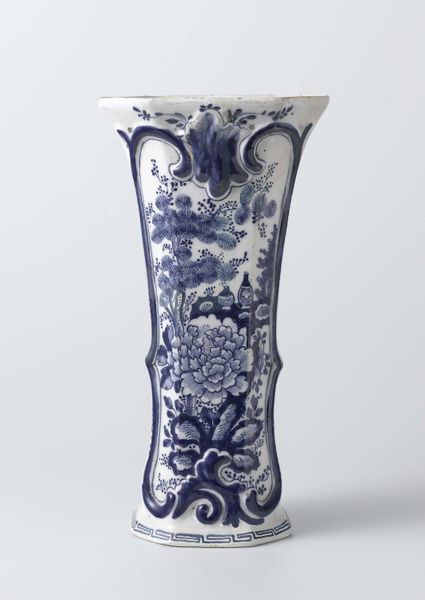
drawing, painting, ceramic
#
drawing
#
painting
#
asian-art
#
ceramic
#
stoneware
#
ceramic
Dimensions: height 43.5 cm, diameter 15 cm
Copyright: Rijks Museum: Open Domain
This is a tall, cylindrical vase, likely from China, decorated with cobalt blue underglaze on white porcelain. The making of such a piece involves many hands. First, the kaolin clay would have been prepared, then carefully shaped on a wheel. After a bisque firing, a skilled painter would have applied the blue decoration, using refined cobalt oxide. The vase was then glazed and fired at high temperature. The result is a smooth, hard, and resonant surface, ideal for the delicate brushwork depicting a scholar's garden. These sleeve vases were popular export items, made in large quantities for the European market. The relative ease with which porcelain could be cleaned and its impermeability made it a popular and hygienic choice to display flowers. The production of porcelain like this was among the most sophisticated industrial systems of its day. So, next time you see a piece of porcelain, remember that it is not just an object of beauty, but also a testament to collective labor and global trade.
Comments
rijksmuseum about 2 years ago
⋮
In the mid-17th century the Dutch East India Company took great pains to buy vases painted in clear blue tints with scenes full of trees and rocks alternating with Chinese figures. This ware is known as ‘Transitional porcelain’, since it was made in the period of transition from the Ming dynasty (1368–1644) to the Qing dynasty (1644–1911).
Join the conversation
Join millions of artists and users on Artera today and experience the ultimate creative platform.
